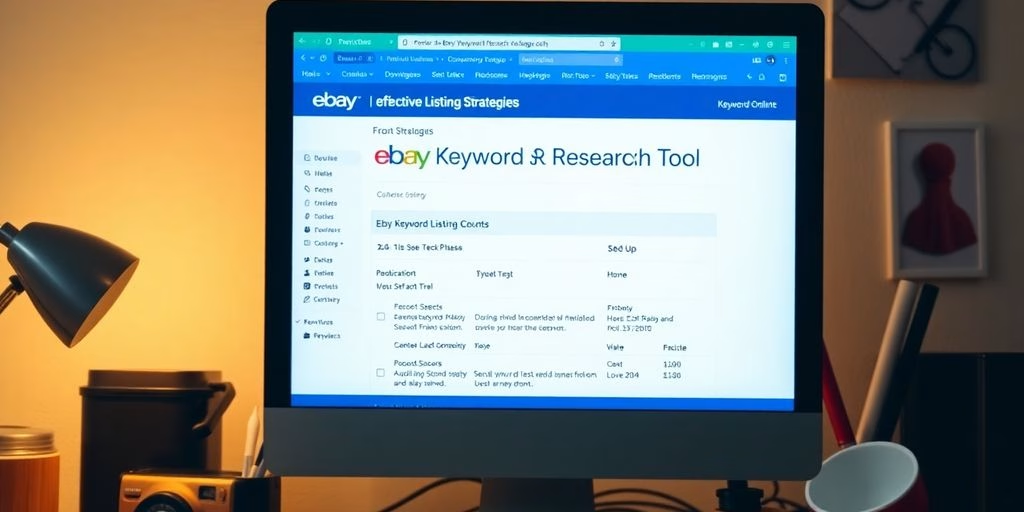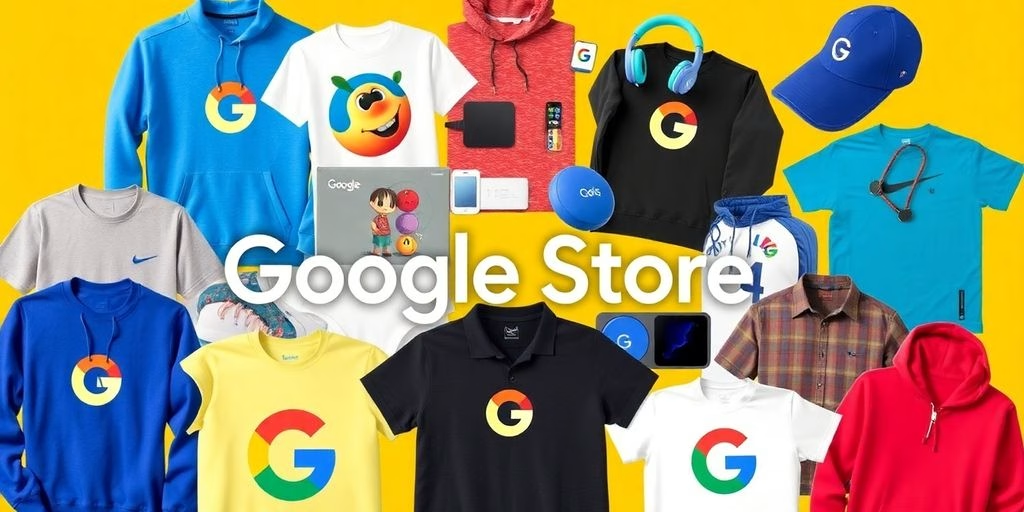In the digital age, the distinction between various types of websites can be as nuanced as the content they host. From e-commerce platforms to personal blogs, each type of website serves a unique purpose and caters to different audience needs. Understanding the different types of websites is crucial for anyone looking to establish a successful online presence. This article delves into the myriad of website categories, the blogosphere’s influence on content creation, the differences between websites and blogs, and the technology that powers them all.
Table of Contents
ToggleKey Takeaways
- Different types of websites serve distinct purposes, from selling products to facilitating social connections and showcasing creative portfolios.
- Blogs offer an interactive platform for engagement, enabling readers to comment, share, and respond to content, often featuring a dynamic and conversational tone.
- Understanding the differences between a blog and a website is essential, with blogs focusing on regular content updates and websites presenting a more static informational structure.
- Choosing between a blog and a website depends on one’s goals, with blogs favoring community building and websites serving as a digital storefront or brochure.
- Staying updated with web technology trends is crucial, as it influences how content is created, structured, and delivered to users across the digital landscape.
The Digital Spectrum: Types of Websites

E-commerce Emporiums: The Online Marketplaces
In the net, e-commerce emporiums stand as modern-day marketplaces, where the click of a button can fulfill desires from the mundane to the exotic. The evolution of e-commerce has transformed online stores into seamless shopping experiences, artfully influencing consumer behavior with desire creation and persuasion techniques.
- The Ultimate Guide to Ecommerce Marketing
- The evolution of ecommerce
E-commerce isn’t just about transactions; it’s a stage for brand storytelling, a platform for social media engagement, and a tool for nurturing customer loyalty. The challenges are as diverse as the opportunities, ranging from combating counterfeit products to ensuring data security, promoting sustainability, and fostering community.
As we navigate this digital domain, it’s crucial to understand the strategies for successful online selling. Authentic marketing and leveraging internet culture are not just buzzwords but essential ingredients for a thriving online presence.
Educational Hubs: From Kindergarten to Quantum Physics
this type of website, educational, is as diverse as the subjects they cover. From the basic building blocks of reading and arithmetic to the complex theories of quantum physics, these digital hubs offer resources for learners at every level. Educational websites are not just repositories of knowledge; they are interactive, engaging platforms designed to cater to various learning styles and abilities.
Educational hubs have revolutionized the way we approach learning, making education more accessible than ever before. For instance, numerous websites provide free science worksheets that are a boon for learners from kindergarten to high school. These resources are tailored to diverse learning styles, ensuring that science education is not only informative but also engaging and accessible to all.
The structure of these websites is meticulously crafted to ensure a seamless and accessible digital journey. Clear navigation, intuitive user experience, and inclusive design are the cornerstones of these educational platforms.
Social and Community Website
In the vast expanse of the digital universe, social media websites stand as bustling metropolises, where every status update, photo, and video is a thoroughfare connecting lives across the globe. The power of these platforms lies in their ability to bring people together, whether they’re old friends, new acquaintances, or potential business partners.
- Facebook Feed
- Instagram Feed
- YouTube Feed
- Twitter Feed
- Vimeo Feed
- Multi Social Feed
These feeds are more than just digital streams of consciousness; they are curated galleries of personal milestones, breaking news, and viral trends. Each platform offers unique tools for engagement, from ‘likes’ to ‘retweets’, turning passive browsing into active participation.
The key to a thriving social media presence is not just regular posting, but also engaging with your audience in meaningful ways.
With the right strategy, these social circles can amplify your voice and even drive traffic to your personal or business website. It’s essential to monitor metrics like traffic, bounce rate, conversion rate, and social shares to gauge the impact of your content and refine your approach for maximum reach and engagement.
Portfolio Showcases: Strutting Your Stuff Online
In the digital age, a portfolio is more than a collection of work; it’s a virtual stage for your creativity. Showcasing your projects online is akin to an artist’s gallery opening, with each click serving as an RSVP to your exhibit. A well-crafted portfolio website can speak volumes about your skills and style before a single word is exchanged.
- Various articles on digital marketing strategies, including value proposition, ROI, Google Business Profile optimization, CTA, bounce rate reduction, split testing, SEO techniques, backlink building, conversion rate optimization, and graphic design tips.
- Digital art, apps, and music/podcasts in the digital realm aim to create immersive experiences that engage, inspire, and transport the audience. Imagination is key in crafting these digital goods.
Your portfolio is your digital handshake, the first impression that can open doors to new opportunities. It’s essential to populate it with diverse projects that reflect your expertise and the breadth of your capabilities.
Streaming Giants: The Video Vortex
In the swirling video vortex of the internet, streaming giants stand tall, offering an endless buffet of visual feasts. From blockbuster movies to indie documentaries, these platforms have revolutionized the way we consume media. But what makes them tick? At the heart of every streaming service is a complex web of technology, content licensing, and user experience design.
- Netflix: The binge-watcher’s paradise
- Amazon Prime Video: A treasure trove of originals and classics
- Hulu: The hub for TV show enthusiasts
- Disney+: A dreamland for fans of Disney, Marvel, and Star Wars
- HBO Max: The go-to for cinematic masterpieces
Each platform has its own unique flavor, catering to diverse tastes and preferences. Whether you’re in the mood for a laugh-out-loud comedy or a gripping thriller, there’s a streaming service with your name on it.
In this digital era, the power of choice is truly in the viewer’s hands. With a few clicks, one can traverse genres, eras, and even realities, all from the comfort of their couch.
The Blogosphere: Where Content Reigns Supreme

The Anatomy of a Blog: More Than Just a Diary
Gone are the days when blogs were merely online journals for the introspective writer. Today’s blogs are vibrant hubs of information and interaction. They are crucial elements in the anatomy of a blog post, providing key signposts that guide and engage readers. When writing a blog post, it’s essential to understand that you’re not just sharing information; you’re creating a community.
- Writing Style: Adopt a conversational tone to make your content feel personal and engaging.
- Content Structure: Organize posts in reverse chronological order to encourage regular visits.
- Audience Interaction: End posts with questions or prompts to invite reader input and foster community.
Blogs have evolved into platforms where empathy and audience engagement are just as important as the content itself.
Understanding the anatomy of a successful blog involves recognizing the key factors that make it tick. From a documented strategy to the inclusion of visual content and natural, relevant links, every element plays a part in captivating an audience. Remember, a blog is more than a diary; it’s a conversation, an exhibition, and a strategy all rolled into one.
Engagement Is Key: Comments, Shares, and CTAs
In the bustling blogosphere, engagement is the currency of success. It’s not just about the content you create, but how you connect with your readers. A blog thrives on the back-and-forth with its audience, turning passive readers into active participants. Here’s a guide to optimizing blog content with effective CTAs, images, videos, subheadings, and bullet points to enhance reader engagement:
- Craft compelling and clear calls-to-action (CTAs) that guide readers to the next step.
- Encourage comments by ending posts with questions or prompts.
- Use images and videos to break up text and add visual interest.
- Organize content with subheadings and bullet points for easy reading.
The magic lies in the mix of these elements, creating a symphony of interaction that resonates with your audience.
Social media CTAs are particularly potent, capable of boosting traffic and engagement significantly. A simple “Double-tap if you agree!” can work wonders, as can a more involved prompt like “Share your thoughts in the comments below!”. This open invitation fosters a sense of community and keeps the conversation going beyond the original post.
Blogs in the Wild: Examples and Inspirations
When you’re venturing into the blogosphere, it’s like stepping into a jungle teeming with diverse life. Each blog is a unique creature, thriving in its own niche. Strategically engage in roundups and guest blogging to build relationships, offer unique insights, and target relevant sites for valuable backlinks and collaborations. This tactic not only enhances your visibility but also weaves your narrative into the larger digital tapestry.
For those seeking muses in the wild, look no further. Here’s a snapshot of successful blogs that are ruling the roost in 2024:
- Artificial Intelligence Blogs: Where the bots come to life.
- Data Science Blogs: Crunching numbers into stories.
- The Plus Addons Blog: A treasure trove for web design aficionados.
- The Google Blog: The pulse of a tech titan.
Each blog stands as a testament to the power of focused content and a well-crafted digital strategy. They serve as beacons, guiding aspiring bloggers towards what’s possible with passion and perseverance.
Type of Website: Blogs

The Great Divide: Content and Purpose
At the heart of the digital realm lies a fundamental distinction: the purpose and content of websites versus blogs. Websites are akin to digital brochures, static showcases designed to present information in a neatly organized hierarchy of pages and sub-pages. They serve as the cornerstones of online presence for businesses, institutions, and individuals alike, offering a structured exploration of their offerings.
In contrast, blogs are dynamic, ever-evolving tapestries of thoughts, stories, and expertise. They thrive on fresh content, engaging readers with a conversational tone and a chronological flow that invites return visits. Blogs are not just about sharing; they’re about sparking a dialogue, with each post serving as a catalyst for discussion and community building.
- Content Structure: Websites offer a clear hierarchy, while blogs display a chronological flow of posts.
- Engagement: Websites inform, blogs converse.
- Purpose: Websites establish an online presence, blogs build a community.
The key to mastering the digital landscape is to understand these differences and leverage them to your advantage. Whether you’re aiming to inform, sell, or connect, aligning your platform’s structure with your strategic goals is essential.
Is It a Bird? Is It a Plane? Identifying Blogs and Websites
In the digital skies, blogs and websites might seem to flutter and soar with similar grace, but upon closer inspection, their flight patterns reveal distinct differences. Blogs are akin to migratory birds, constantly on the move with fresh content and engaging discussions. They thrive on interaction, inviting readers to leave comments and share posts, creating a vibrant community around their content.
Websites, on the other hand, are more like majestic eagles, soaring high with a broad overview but less frequent changes. They present a more static and structured experience, often serving as digital brochures or storefronts that showcase services or products without the need for daily updates.
To help you navigate these digital species, here’s a quick checklist:
- Look for a reverse chronological feed of articles for blogs.
- Check for a conversational tone and personal storytelling in blog posts.
- Websites often have a professional layout with sections for services, about us, and contact information.
- Blogs encourage audience interaction, while websites may not.
When it comes to creating an online presence, understanding the nuances between blogs and websites is crucial for tailoring your approach to your audience and objectives.
Structure Showdown: Organized Pages vs. Dynamic Posts
When it comes to the web, structure is not just a matter of aesthetics; it’s the backbone of user experience. Static web pages offer a consistent and unchanging face to the world. They’re like the trusty old book on your shelf – always the same, always reliable. On the flip side, dynamic web pages are the chameleons of the internet, changing their content and layout to suit each visitor’s unique needs.
In the realm of websites, clarity and consistency in structure are not just nice-to-haves; they’re essential for navigation, SEO, and ensuring your site is accessible to all.
Here’s a quick rundown of the differences:
- Static Pages: Unchanging content, same experience for every visitor.
- Dynamic Posts: Content varies based on user interaction or other factors.
Choosing between static and dynamic content boils down to the purpose of your website and the experience you want to provide. A blog, for instance, thrives on dynamic posts, enticing visitors to return for the latest scoop. Meanwhile, a corporate website might favor static pages to present a steadfast brand image.
Choosing Your Digital Persona: Blog or Website?

The Retail Shop Analogy: Understanding Functionality
When venturing into the digital marketplace, it’s crucial to decide whether to set up a website or a blog. Think of a website as the storefront of a retail shop, neatly displaying all products with price tags attached. It’s designed for discovery, convenience, and showcasing a broad range of offerings.
Conversely, a blog is akin to a friendly chat with a knowledgeable shop assistant. It’s where you dive deeper, gaining personalized insights and engaging in a community of like-minded individuals. Here, the conversation is king, and the content is ever-changing, much like the dynamic environment of a physical store.
- Unlock subtle psychology: Use a blog to ethically influence and engage your audience.
- Build a standout personal brand: A website’s structured layout helps highlight your unique offerings.
- Leverage social media: Integrate with your site or blog for powerful marketing synergy.
In the realm of digital identity, the choice between a website and a blog can shape your online presence and how your audience interacts with your brand. It’s not just about the platform, but how you use it to connect and provide value.
Content Choreography: Structuring Your Online Presence
In the dance of digital presence, your content’s choreography can make or break the audience’s experience. A blog’s content structure is more dynamic, typically organized in reverse chronological order to showcase your latest moves. This encourages regular visits from your audience, eager to see your newest steps.
On the flip side, a website’s content is the grand stage where everything is meticulously placed. Each section, from About to Services, is a rehearsed act, available to visitors at all times, presenting a consistent image of your brand.
The key to successful content choreography is not just in the steps you create but in how you guide your audience through the performance.
Here’s a quick guide to developing your content strategy:
- Define your business goals and audience.
- Map out content that meets audience needs while driving your goals.
- Keep your blog posts fresh and engaging to foster discussions.
- Ensure your website pages reflect your brand’s core message.
- Use analytics to refine your strategy and keep your audience captivated.
Navigating the SEO Maze: Formats That Favor Visibility
In the labyrinth of SEO, the Theseus to your Minotaur is a well-crafted format. Formats that are easy on the eyes—and algorithms—win the day. For instance, the ‘question and answer’ or ‘FAQ’ style is not just a way to address common queries; it’s an SEO goldmine, targeting those keywords that users are likely to punch into search engines.
But it’s not just about appeasing the Google gods. A format that enhances readability, like breaking content into bite-sized paragraphs and using lists, also keeps the human visitors engaged. After all, what’s the point of ranking high if your content sends readers to sleep?
The key is to strike a balance between SEO optimization and user experience. This means creating content that is both discoverable and delightful to read.
Let’s not forget the importance of navigation. A sitemap isn’t just a polite gesture; it’s a beacon for search engines to find and index your content. And when it comes to templates, choosing ones that are SEO-friendly from the get-go can save you a headache later on. Here’s a quick rundown of formats that can enhance both visibility and user engagement:
- Question and Answer / FAQ
- How-to Guides
- Listicles
- Infographics
- Interactive Tools
Remember, the right format can be the difference between being a needle in the digital haystack and standing out like a lighthouse in the vast sea of online content.
Web Technology Deconstructed

The Building Blocks of the Web: A Layman’s Guide
Diving into the world of web development can feel like exploring a digital jungle. The first step is to learn the basic building blocks of the web: HTML, CSS, and JavaScript. These are the lingua franca of the web, the foundation upon which all websites are built. Once you’ve mastered these languages, you can enhance your toolkit with libraries and frameworks such as jQuery, Angular, or React.
The importance of web design in branding and user experience cannot be overstated. It’s not just about aesthetics; it’s about creating a seamless interface that users can navigate effortlessly. This is where website wireframes come into play, serving as the blueprint for a well-structured and user-friendly website.
In the realm of web technology, staying updated is not just recommended; it’s essential. Trends like AI and VR are on the horizon, promising to redefine the digital experience.
Here’s a quick rundown of the web technology classifications:
- World Wide Web (WWW): The foundation of all web activity.
- Web Browser: Your portal to the vast resources of the WWW.
- HTML: The skeleton of all web pages.
- CSS: The styling that makes websites look good.
- JavaScript: The scripting language that brings interactivity to the web.
From Code to Content: Understanding Web Development
Web development is a fascinating journey from the first line of code to the final user experience. It begins with the basics of web development: HTML, CSS, and JavaScript. These are the building blocks that form the foundation of the web, the canvas upon which all websites are painted.
Web development is the process of building websites and apps. Developers write code which determines how a website or app looks and functions.
Once you’ve mastered these languages, you’ll dive into the world of libraries and frameworks, such as jQuery, Angular, or React. This is where the magic happens, allowing for the creation of dynamic, responsive, and interactive web pages. But it’s not just about the front end; there’s also the backend, the unseen engine room where data is stored and managed.
- Frontend Development: The user-facing side, involving everything the user interacts with directly.
- Backend Development: The server side, where the data is processed and managed, away from the user’s eyes.
Understanding web development is akin to learning a new language, one that allows you to bring ideas to life on the digital stage.
Staying Ahead: Keeping Up with Web Technology Trends
In the ever-evolving world of web technology, staying ahead isn’t just a luxury; it’s a necessity for survival in the digital jungle. Continuous learning and professional development are the cornerstones for web designers and developers aiming to keep their skills sharp and their sites shimmering with the latest features. Engage in online communities, attend conferences, and don’t shy away from experimenting with new tools to stay on the cutting edge.
To truly embrace the future, one must be well-versed with the upcoming trends that are shaping the web. For instance, the integration of AI and voice interfaces is not just a fad but a revolution that’s here to stay. By keeping a close eye on these developments, you can ensure your website remains digitally ahead and successful.
In the digital realm, adaptability is the name of the game. Those who can quickly assimilate new technologies and trends into their workflow will find themselves at the forefront of innovation.
Here’s a quick checklist to help you stay updated:
- Regularly update your content to keep your website fresh and engaging.
- Backup your website to safeguard against data loss.
- Keep an eye on web development articles and guides; they’re a treasure trove of insights.
- Follow influential developers and experts who often share valuable tips and trends.
Dive into the intricacies of web technology with our article, ‘The Tech Behind the Talk: Web Technology Deconstructed’. Unravel the complexities of the digital world and understand the building blocks that power your online presence. For a deeper exploration and personalized assistance, contact us now and let’s achieve remarkable success together. Don’t hesitate to reach out and contact us now!
Conclusion
As we’ve spun through the digital tapestry of websites and blogs, it’s clear that the web is a vast and varied landscape, each thread woven with a different purpose and pattern. From the sleek storefronts of e-commerce sites to the bustling forums of social media platforms, and the cozy corners of personal blogs, there’s a space for every pursuit and passion. Remember, whether you’re setting up shop or starting a conversation, the key is to tailor your online abode to the needs of your audience. So go forth, choose your domain wisely, and may your digital journey be as dynamic and engaging as the content you create. After all, in the grand tapestry of the internet, every stitch counts!
FAQs
What is the main difference between a blog and a website?
The difference between a blog and a website lies in content and purpose. Websites serve as digital catalogs that provide static information about services or products, while blogs are updated regularly with new, dynamic content aimed at educating or entertaining readers to enable a more interactive relationship with the audience.
Can you provide examples of different types of websites?
Certainly! Examples of different types of websites include e-commerce sites for selling goods and services, educational sites for schools and universities, social media platforms like Facebook, online portfolios for showcasing work, and video streaming sites like YouTube.
How does a blog facilitate interaction with its audience?
Blogs are interactive platforms that allow readers to engage with content by leaving comments, sharing blog posts, and responding to Calls-to-Action (CTAs), which fosters a sense of community and keeps the conversation going beyond the original post.
How is content structured differently on websites and blogs?
Websites are usually structured with a clear hierarchy, organizing content into pages and sub-pages, while blogs present content in a more dynamic format with regular updates and posts that encourage ongoing interaction.
What analogy can help understand the functionality of a blog versus a website?
To understand the functionality, think of a website as a storefront of a retail shop displaying products and prices, whereas a blog is like a conversation with a shop employee, offering a personalized view and insider insights.
How can different content formats benefit a blog’s engagement and SEO?
Different content formats, such as lists or how-tos, offer versatility and engagement, making it easier for readers to navigate and find information. Formats like ‘question and answer’ or ‘FAQ’ can boost SEO by targeting specific queries.









































































































